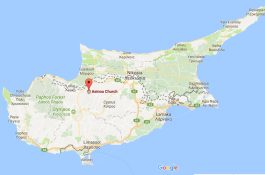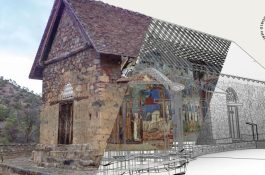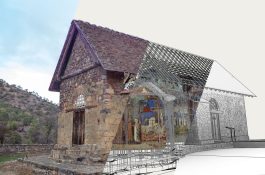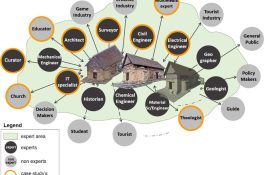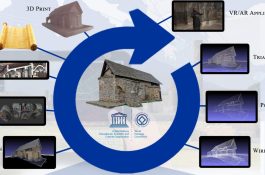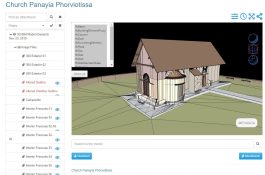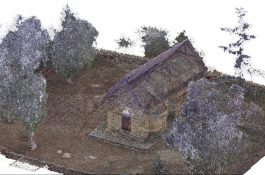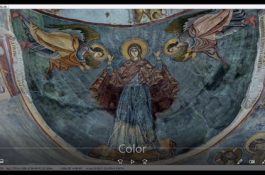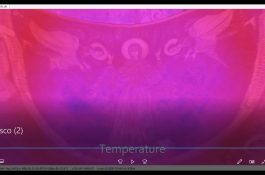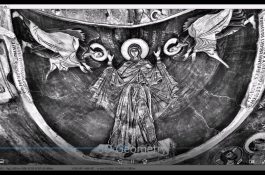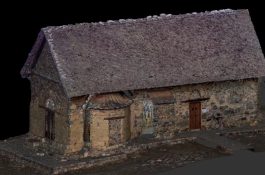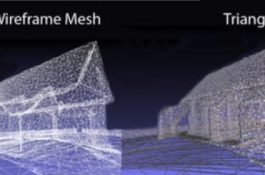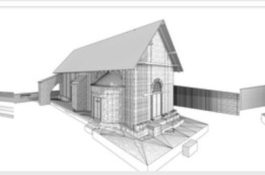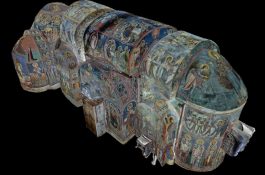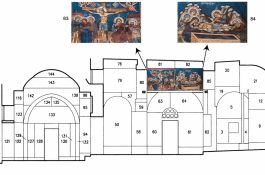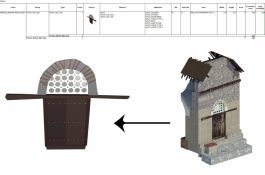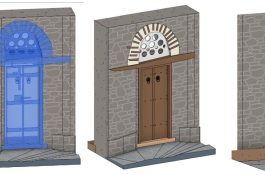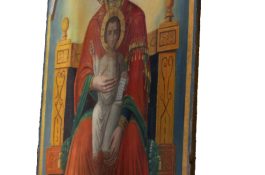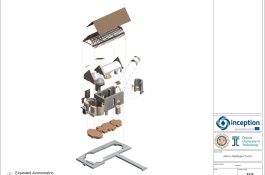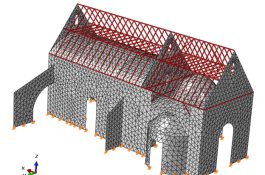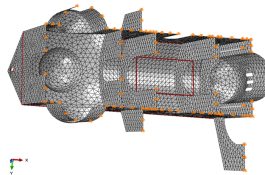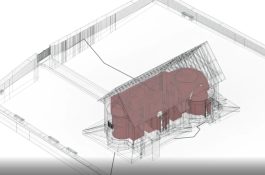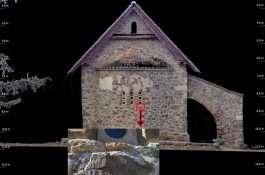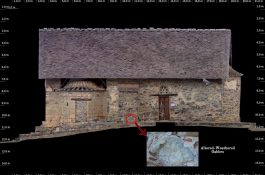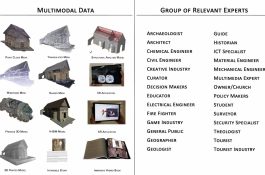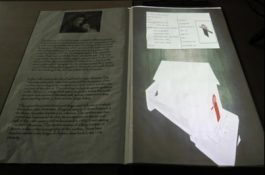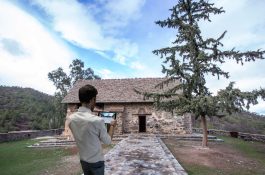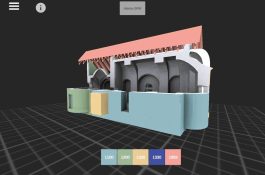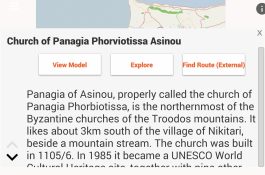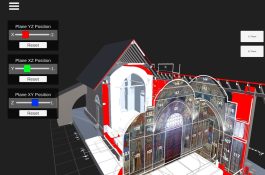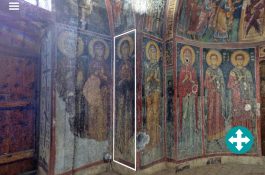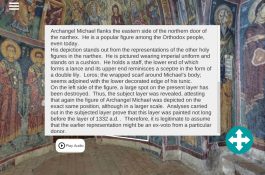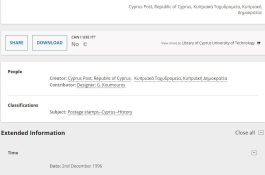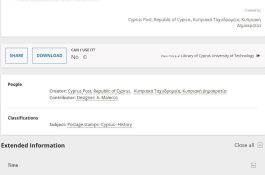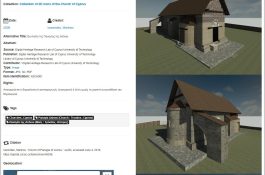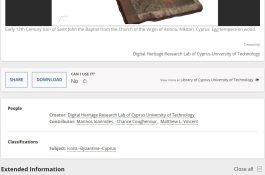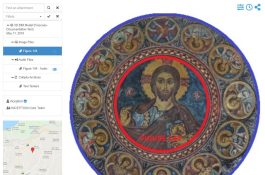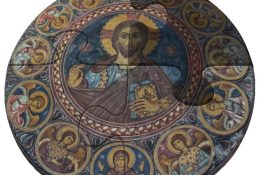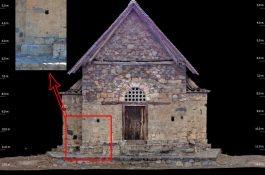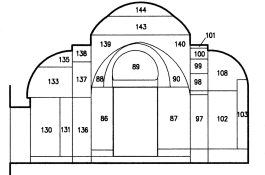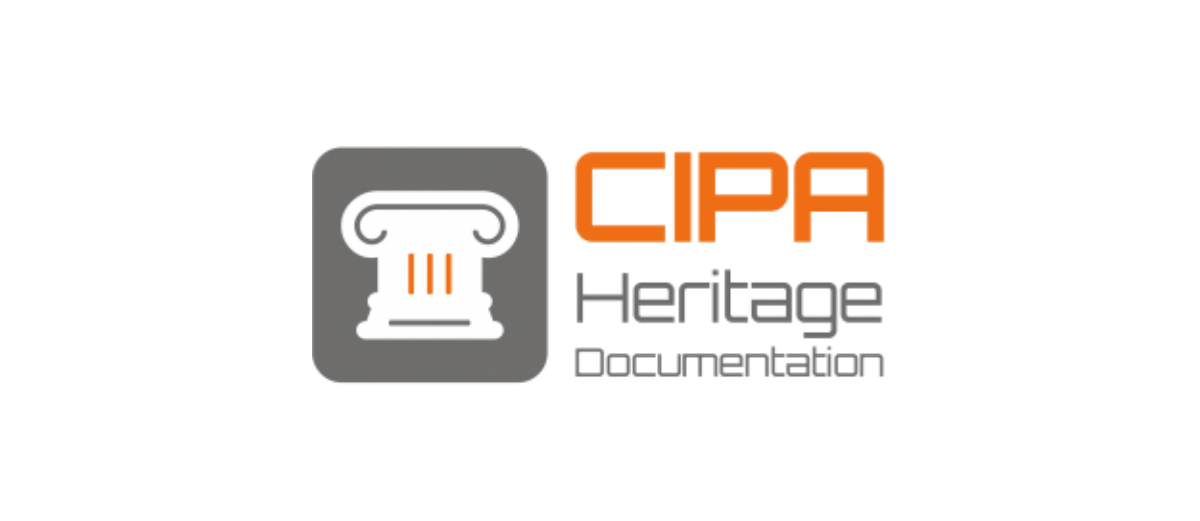Summary
Inscribed as a UNESCO World Heritage Site in 1985, Asinou Church is one of ten monuments making up the Painted Churches in the Troodos Region, Cyprus. Dating from the 11th century, the church contains some of the finest Byzantine wall paintings worldwide. CUT and its partners undertook to record the monument not only to provide an HBIM reference model aiding conservators and architects in the maintenance and protection of the building but to engage audiences and cultural tourists with the history and significance of the site through incorporating both tangible and intangible heritage assets into compelling narratives using digital technologies.
Statement
The aims of the project were twofold 1) to create a comprehensive 3D HBIM digital survey of the church and 2) to undertake an equally comprehensive survey and recording of the intangible cultural heritage surrounding this monument of outstanding historical value. The impetus for this is that monument is set in a rural location with very little touristic activity despite being extensively renovated in the mid-20th century is at risk from criminal activity, negligent tourists and natural hazards including earthquake and wildfire risk. Further, we consider that without such tangible assets any building is just a structure and through combining both the tangible and the intangible the structure becomes a monument with a unique set of multi-vocal narratives through which the visitor can engage, understand and appreciate heritage in new ways.
The project took the position that rather than taking the traditional route of recording the building that this was just one phase of a wider methodology to approach the documentation of cultural heritage in the 21st century. Removing the emphasis on the physical and giving the intangible parity enabled a fresh look at the problem domain. Rather than following the make, use, discard model the project considered the l sharing, leasing, reuse, repair, refurbishment and recycling of digital assets. This holistic approach required a sea-change in understanding the way the digitisation process of cultural heritage is currently undertaken, and critically how its output is viewed.
By identifying and placing the stakeholders, including the local community and tourist focus groups at the beginning of the digitisation process the project was able to realign the perception of the different stakeholder groups and engage them all at the inception of the project rather than wait until the data acquisition had been undertaken to decide what the use case for asset exploitation was (if any) and fit intangible assets into the digital representation. This early involvement of the different groups had the effect of fostering a mutual goal and user “by in” to the project and its results which proved to be mutually beneficial with each stakeholder feeling that they had meaningful input into the process and even if their contribution was not directly involved with the other participant’s domain (for instance the art historian and the civil engineers point of view and needs) all parties moved forward together as a common project.
To communicate the process to the stakeholder groups planning for the digitisation and data collection campaign was organised in such a way that each party had the opportunity for input increasing the sense of mutual ownership. When the initial digitisation campaign concluded each user group knew what had been achieved, which assets were available, and which data view was appropriate to each other’s requirements. This allowed the rapid and meaningful deployment of resources to the stakeholder parties. Moreover, because each party had parity within the project, subsequent maintenance of the assets became a group concern rather than a fragmented approach relying on individual stakeholders.
Before Cyprus joined the European Union in 2004, many rural cultural sites in the Republic had been underdeveloped as a tourist destinations, having some domestic activity but very few international visitors. It had been anticipated that with the increased economic activity and free movement within Europe, these overlooked heritage gems would benefit from a new wave of cultural tourism. However, the opening of borders had the unexpected result of the easing of travel between the Republic of Cyprus and the occupied northern part of the island. This saw commercial tourist operators taking advantage of the economic differential and rather than retaining tourists within the Republic, promoting sites in the cheaper north.
The results of the first digitation of Asinou in 2004 saw an increase in the number of independent tourists visiting the site out of curiosity and at the request of the stakeholder groups subsequent digitisation ‘maintenance’ campaigns have allowed refinement to the asset portfolio and allowed these to be combined with pre-existing assets, taking advantage of technological improvements and able to respond to changes in tourist activities. Crucially by building on the community-shared and approved resources, the subsequent campaigns of 2014, 2016, 2019 and 2021 have kept the project alive and fresh both in the community, the stakeholders, and in the minds of tourists and tourist operators.
The site has seen a steady increase in tourist numbers, including the return of organised tours and coaches, reflecting the desire of tourists who, having seen the digital representation of Asinou, wish to see the church (and the other nine UNESCO sites that comprise the Painted Churches in the Troodos Region world heritage listing) in the flesh.
While the impact of the holistic approach to digital documentation of Asinou has yielded noticeable benefits for the stakeholders as the first heritage site to undergo this new strategy for cultural heritage destinations it has had significant implications for conducting similar work at other locations. Lessons learnt from the project fed directly into the influential VIGIE 2020/654, “Study on quality in 3D digitisation of tangible cultural heritage”, and fulfils mandatory European Directive 2014/24/EU (BIM Level 2 obliged for government centrally procured projects). Subsequently, the refinements to the approach developed at Asinou, have been unified in the Mnemosyne methodology and now form the backbone of the EU-funded MNEMOSYNE initiative at the Cyprus University of Technology where seventeen case studies are under investigation to assess how this new approach can be applied to other destinations.
Photo Gallery
